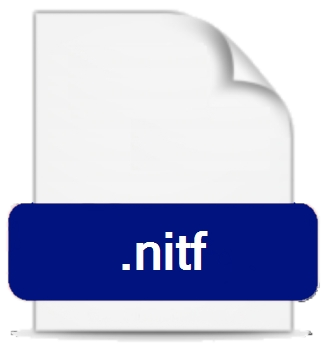.NITF File Extension

National Imagery Transmission Format File
| Developer | U.S. Department of Defense |
| Popularity | |
| Category | Data Files |
| Format | .NITF |
| Cross Platform | Update Soon |
What is an NITF file?
The .NITF file extension stands for National Imagery Transmission Format. It is a widely used file format for the exchange of imagery and geospatial information, especially in the military and intelligence communities.
NITF files are designed to provide a standardized structure for storing and transmitting image and metadata information, making it easier to share and analyze geospatial data.
More Information.
The NITF format has a rich history, dating back to its initial release in the late 1980s. Over the years, it has undergone several updates and revisions to accommodate advances in technology and the evolving needs of the defense and intelligence communities.
The format’s primary purpose has remained consistent: to facilitate the exchange and analysis of geospatial data, including aerial and satellite imagery.
Origin Of This File.
The NITF file format was developed by the United States Department of Defense (DoD) in the late 1980s. Its primary purpose was to establish a common format for transmitting and storing imagery and geospatial data across different systems and platforms.
This standardization was essential for ensuring interoperability among various military and intelligence systems.
File Structure Technical Specification.
NITF files adhere to a specific structure and a set of technical specifications. They consist of a header, image segments, and symbol segments, which store metadata and imagery data.
The format supports various data types, including text, graphics, and imagery. NITF files can be either single-image files or multi-image files, with the latter enabling the storage of multiple images within a single NITF file.
The technical specifications for NITF files define the header format, which includes essential information such as classification, file type, and security markings. NITF files also support geospatial metadata, enabling precise location information to be associated with the imagery.
How to Convert the File?
To convert a .NITF file:
- Identify the need (e.g., view, extract data, or change format).
- Choose compatible software (e.g., ENVI, ArcGIS, GDAL).
- Install and configure the software.
- Open the .NITF file in the software.
- Convert the file to the desired format.
- Specify settings if necessary (e.g., format, resolution).
- Save the converted file.
- Verify the output for accuracy.
Advantages And Disadvantages.
Advantages:
- Standardization: NITF provides a standardized format for imagery and geospatial data, ensuring compatibility across different systems and platforms.
- Metadata Support: The format allows for detailed metadata, enhancing the understanding and analysis of geospatial information.
- Security: NITF files can include security markings and classifications, making them suitable for sensitive and classified data.
Disadvantages:
- Complexity: NITF files can be complex, and their structure may require specialized software for effective use and conversion.
- Limited Usage: While widely used in military and intelligence applications, NITF files may not be as common in civilian or commercial sectors.
How to Open NITF?
Open In Windows
- Install a compatible NITF viewer or geospatial software on your Windows computer. Software options include ENVI, ArcGIS, or the GDAL library.
- Open the NITF viewer or software.
- Use the software’s “Open” or “Import” function to select and open the .NITF file.
- The software should display the contents of the NITF file, allowing you to view and analyze the imagery and metadata.
Open In Linux
- Ensure you have GDAL (Geospatial Data Abstraction Library) installed on your Linux system. GDAL is a powerful tool for working with geospatial data, including NITF files.
- Open a terminal window.
- Use the “gdalinfo” or “gdal_translate” command to view or convert the .NITF file. For example, to view metadata, use:
gdalinfo yourfile.nitf
- To convert the NITF file to a different format, use the “gdal_translate” command.
Open In MAC
- Similar to Linux, you can use GDAL on macOS. Install GDAL via package managers like Homebrew or MacPorts.
- Open a terminal on your Mac.
- Use the “gdalinfo” or “gdal_translate” command as mentioned in the Linux section to view or convert the .NITF file.
Open In Android
- Visit the Google Play Store on your Android device.
- Search for NITF viewers or geospatial apps. One example is “NITF Viewer.”
- Download and install the selected app.
- Open the app and use it to open .NITF files from your device’s storage or cloud services.
Open In IOS
- Go to the App Store on your iOS device.
- Search for NITF viewers or geospatial apps. Look for apps like “NITF Viewer.”
- Download and install the chosen app.
- Open the app and use it to open .NITF files from your device’s storage or cloud services.
Open in Others
For other operating systems, the availability of NITF viewers and tools may vary. You can look for cross-platform software options like GDAL, which supports multiple operating systems.
Web-based tools or cloud-based geospatial platforms may offer .NITF file support accessible from any operating system.













